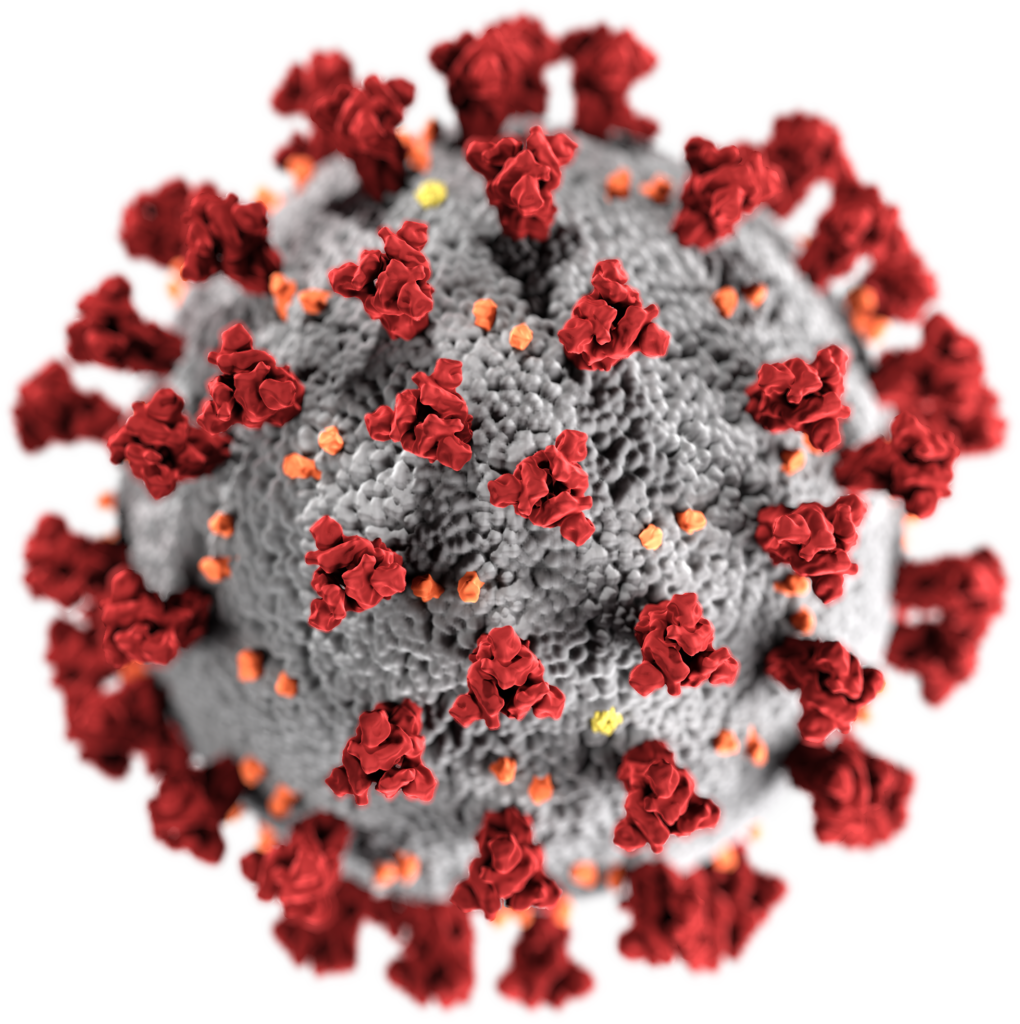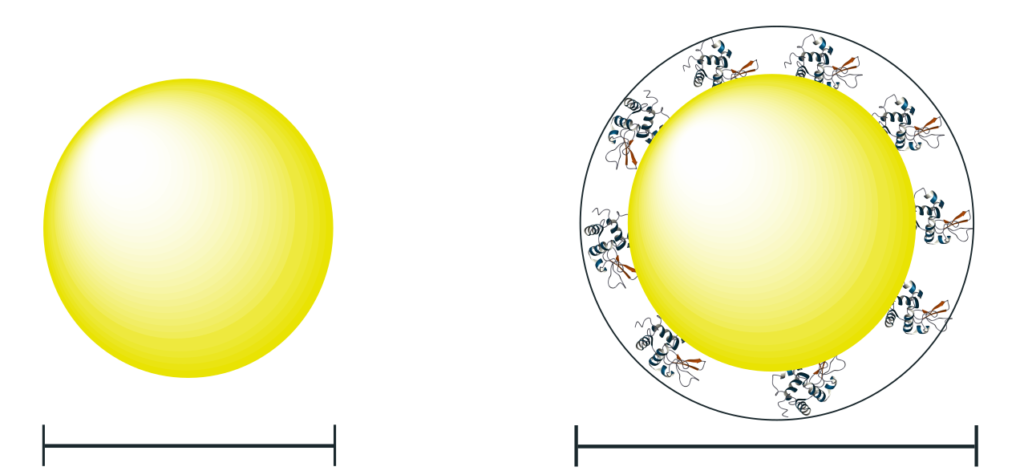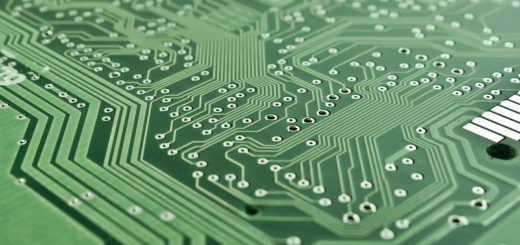Getting rid of ‘Corona’
Once you read the title, the first thing that comes to your mind is the novel coronavirus, the vaccine, and the difficult situation we are facing right now. Keep calm, it’s not about this Corona, it’s something else.
Today, I am going to tell you a different story. However, it’s not too far from what we are currently facing, and it’s important to know about it.
If you have heard about nanoscience before, sure; you heard something about drug delivery based on nanotechnology (which is one of the techniques that has been used for COVID-19 vaccines). When you inject nanoparticles into the body, within seconds, these nanoparticles become decorated with biomolecules to form what we call ‘Biomolecular Corona or Protein Corona’.
Did you know why scientists named the virus family, ‘coronavirus’, and why we are calling this layer of biomolecules ‘Corona’?
The word corona means crown.
The story started in 1968, where the virus under the microscope was looking like a solar corona: the bright crown-like ring of gasses surrounding the sun that is visible during a solar eclipse. This crown is the protein spikes that decorate the virus.


Let’s go back now to our nanoparticles, the biomolecular corona layer affects the efficacy of nanoparticles, for example, if you plan to send these nanoparticles to a specific site or organ to treat it. This is normally achieved by adding a targeting molecule on the nanoparticle’s surface. The existence of biomolecular corona definitely affects this targeting ability. In addition to inducing an immune response that finally results in eliminating them from the body.
This is one of the reasons why there is a delay to translate all of the amazing work of nanomedicine into real products.
Then, how to overcome this corona?
The surface is the Key
Years ago, the great scientist Wolfgang Pauli said.
God made the bulk; the surface was invented by the devil.
Wolfgang Pauli
Since then, we know how important the surface is, particularly when it comes to nanoparticles. The surface of nanoparticles is the first thing ”seen” by our cells. It very much defines the nanoparticle’s identity.
Then, lets play with the surface of the nanoparticle. Yes, exactly.
Decoration of the nanoparticles’ surface strongly influences their fate and efficacy. One possibility is to decorate the surface with a material, which is safe and at the same time helps the nanoparticle to suppress or minimize the corona formation. But, how?
Mimick the nature
In fact, about 75% of the outer side of the cell membrane is zwitterionic. The name comes from the German word ‘zwitter’, meaning hybrid. The zwitterion has both positive- and negative-charged groups, with an overall neutral charge.

Having such decoration on the nanoparticle helps them to avoid the adsorption of proteins on its surface. But, why?
One of the main driving forces of the protein adsorption onto nanoparticles is the electrostatic attraction, and the zwitterionic is neutral. In addition to that, the zwitterionic molecule has the ability to form a hydration layer around it, which acts as a barrier.
How could we measure that ?
Recently, there is a lot of methods to study the formation of protein corona onto nanoparticles. I will tell you here about one of them, and you can check this review if you need to know more about the topic.
The technique I prefer is called Fluorescence Correlation Spectroscopy (FCS), which allows indirectly measuring the size of fluorescent molecules (molecules which emit light when excited by a laser). If you look at the image below, you can easily distinguish the difference between these two nanoparticles, in terms of size.

By using FCS to detect this small difference in size (when you have only the nanoparticle and when you mix it with a pure protein solution), and accordingly, we can figure out if the corona layer will be formed on it or not. In other words, this nanoparticle will stay longer in the body to do its job or will be eliminated fast.
Recent work with zwitterionic surface is encourging and promising to help getting rid of ‘Corona’.
It looks simple but the whole process (to have a real product) is more complex and many factors involved. The strategy is the same as if I ask you, ”how you would eat an elephant?”. As Desmond Tut said, a bite at a time.
It is a long journey and we are on the way.
If you reach this part, I would thank you for your time and I hope you learn something new. I am looking forward to your comments, questions, and corrections.


















Very nicely written. I like that it is detailed yet simply written and easy to understand.
Thanks a lot.
Very nice article and simplified well.
Thanks.
Nice article, keep it up
Thanks, Ahmed.
Wow, that’s a very interesting post to read. I like how you linked your research with a real-life example so that you made it easier for the non-scientific audience to understand. That’s a masterpiece of scientific blogging that shows how you could effectively engage the public and non-expert sector in your research. I would like to read more articles of that type. Keep it up!
Thanks, Mustafa, for these nice words.
Perfect article and I like it 🙂
Thanks, Ahmed.
Well explained, thanks for sharing this!
glad you like it.
Very nice and attractive article, presentation style is excellent.
Thanks for your kind words.
Very nice article, you explained the protein corona in an accessible way and also suggested some solutions!
Thanks, Yanan.
Great and very informative article
Thanks, Shereef.
من السهل تبسيط المعلومه لكن الصعب أن تصيغ المعلومه ال مبسطه بطريقه سلسه،لكنك سهلت وبسطت،، سلمت يمينك دكتور سعد
Thanks Mahmoud.
Nice article, you let me want to change my field into nanoscience. I seem to see my startup company a few years later, thanks!
Thanks, Bing. great..
It is very interesting article.
Good luck Saad.
Thanks a lot.
Interesting article
Thanks, Bassant. happy you find it interesting.
Impressive Saad, very nice article
Thanks, Ahmed..
An amazing and very interesting article.
Thanks for sharing and keep up.
Thanks Mostafa.
Yes. Surface is a vital parameter.
Great plog Saad .. Best regards
It’s an honor for me, you like it Prof. Alaaldin.
Very Informative for me , good article
It is a very interesting and informative article.
Thank you, Saad.
Please keep up the good work.
Greetings.
Thanks for your words.,
Thanks for the information and very useful 🙂